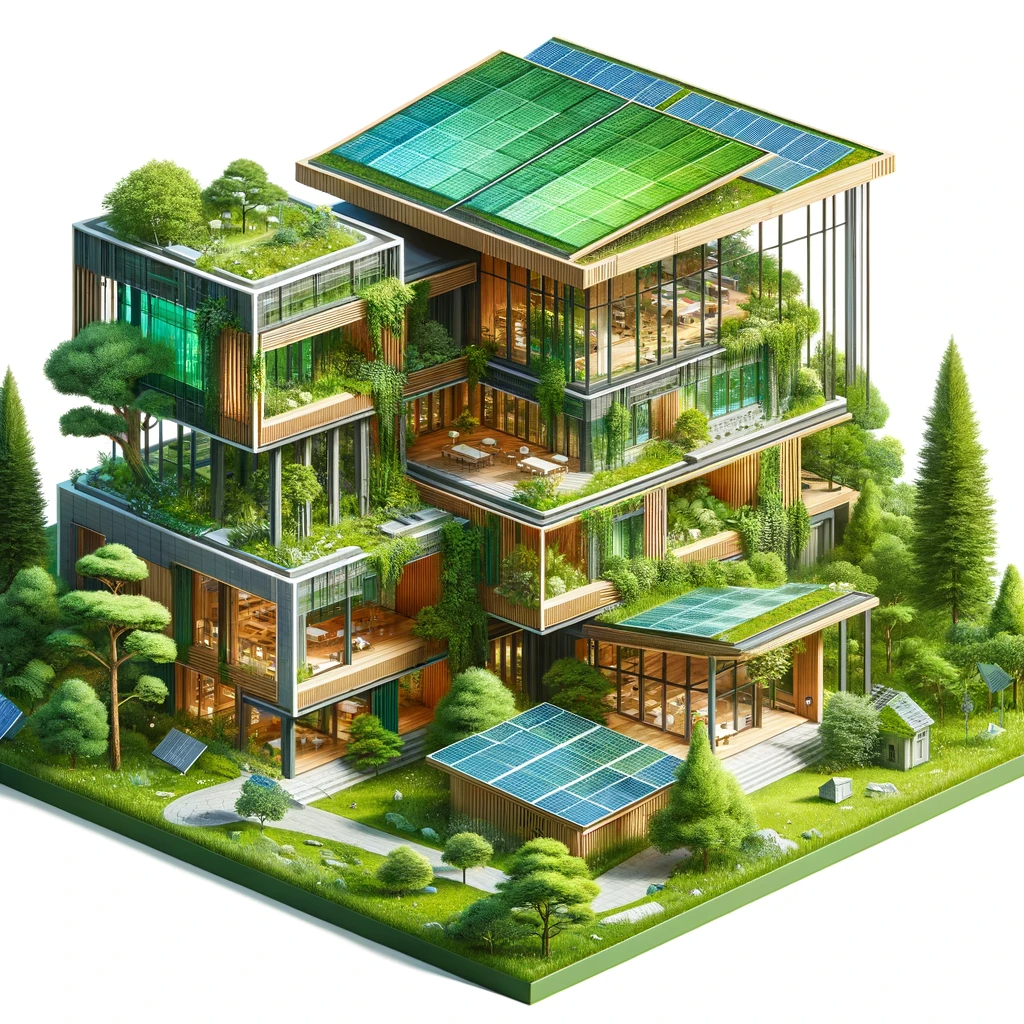Sustainable Materials in Green Building Design
As the world grapples with environmental challenges, the construction industry is stepping up to the plate by embracing sustainable materials in green building design. In this article, we delve into the exciting world of sustainable building materials, their myriad benefits, and their potential to revolutionize construction projects, ushering in a more eco-friendly and energy-efficient future.

The Emergence of Sustainable Building Materials
1. Sustainable Materials Unveiled
Sustainability in construction hinges on materials that are not only eco-friendly but also reduce our reliance on natural resources while minimizing the environmental impact. These sustainable building materials are designed to slash greenhouse gas emissions and cut down energy consumption during production.
2. Diverse Sustainable Building Materials
a. Embracing Recycled Materials
Recycled materials like plastic and steel are leading the charge in sustainable construction. These materials divert waste from landfills, curb pollution, and significantly reduce energy consumption during their manufacture.
b. Harnessing Natural Elements
Bamboo, cork, timber, and rammed earth are natural materials that shine in sustainable construction. They are renewable resources and boast a smaller carbon footprint compared to their synthetic counterparts.
c. The Fungus Frontier: Mycelium and Mushroom-Based Materials
Mycelium, a type of fungus, is the hidden hero behind innovative sustainable building materials. These materials are not only environmentally sound but also highly adaptable, allowing for digital designs in virtually any shape.
The Remarkable Advantages of Sustainable Materials
1. Energizing Efficiency
Sustainable materials are renowned for their ability to reduce energy consumption, translating into lower energy bills for homeowners and a smaller environmental footprint for commercial buildings.
2. A Green Impact
By embracing sustainable materials, you can substantially reduce greenhouse gas emissions and overall environmental impact associated with construction projects.
3. Prolonged Lifespan
Many sustainable materials boast exceptional durability, resulting in buildings with extended lifespans and fewer replacements, further reducing waste.
Integration of Sustainable Materials in Construction
1. Selecting Wisely
The choice of sustainable materials depends on various factors, including location, climate, and the intended use of the structure. Opting for locally sourced materials can further cut down transportation emissions.
2. A Blueprint for Sustainability
Architects and designers play a pivotal role in infusing sustainability into their projects. They can incorporate eco-friendly building products and design structures that maximize energy efficiency.
3. On-Site Sustainability
Construction professionals should prioritize the use of sustainable materials and products while implementing green building practices. This includes waste reduction and recycling on construction sites to minimize environmental impact.
Peering into the Future of Sustainable Construction
1. Sustainable Architectural Advancements
Sustainable architecture is a constantly evolving field, with new construction methods and materials continually emerging. Staying informed about the latest trends and technologies in green building is essential for staying ahead in the realm of sustainability.
2. A Global Impact
The use of sustainable construction materials not only benefits individual projects but also contributes to a more sustainable, eco-conscious planet. It aids in preserving natural resources, curbing pollution, and fighting climate change on a global scale.
Conclusion: Embrace the Green Revolution
In an era where the construction industry significantly contributes to greenhouse gas emissions, adopting sustainable building materials is a vital step towards a more sustainable future. These materials not only enhance energy efficiency but also reduce our carbon footprint and reliance on conventional materials. By incorporating sustainable materials into your construction projects, you can leave a positive environmental legacy while creating durable, energy-efficient homes and commercial buildings. Join the sustainable construction revolution today!
